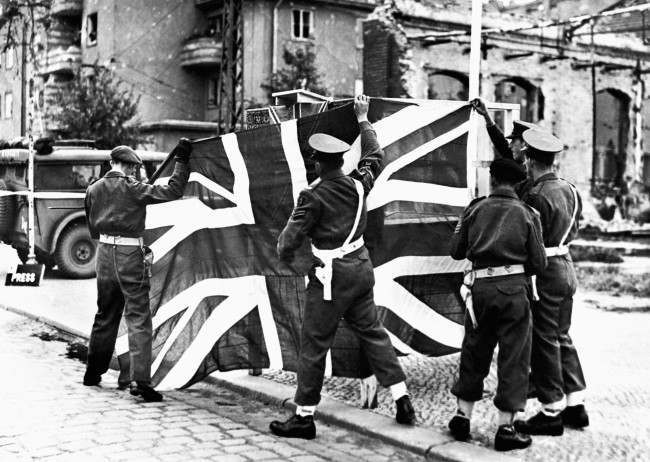
An historic occasion as British Military Policemen prepare to hoist the Union Jack to receive the official entry of the British Army into Berlin. Date: 30/05/1945
ON the night of June 5 1944, the Allied began to bomb Normandy. Around 1,300 RAF plans were followed by over 1,000 Us bombers. The assault began shortly after midnight under the command of General Bernard Montgomery.
The D-Day invasion, code named Operation Overlord, the largest seaborne invasion in history, was on. And it was brutal. Portsmouth’s D-Day Museum reports that 4,413 Allied troops died on the day of the invasion.
The invasion split the Germans and their allies in Europe. Britain and her allies were winning.
On a personal note, members of my own family were involved on both sides of the war effort. On the Allied side, I have an abiding love for one grandfather who was a fireman in London’s East End. What he saw, he never told us. None of he and his brothers and sisters ever told us what they saw. They told us of the songs and the smoking and the huts. But you grow up. And you realise what they left out and why. On the other side of the battle lines, my ancestors were enslaved in the Germans’ camps.
To anyone sane, on that no more need be said here.
After years of horror, the end was in sight.
If there is one volume on the war that everyone should read it is Primo Levi’s If This is a Man, and The Truce . He ends the first book of the two by telling his readers:
“We do not believe in the most obvious and facile deduction: that man is fundamentally brutal, egoistic and stupid in his conduct once every civilised institution is taken away … We believe, rather, that the only conclusion to be drawn is that in the face of driving necessity and physical disabilities many social habits and instincts are reduced to silence.”
Never forget sounds almost glib nowadays. But D-Day stopped the Nazis demolition of mankind.
They came close to succeeding. Each of their victims was a Nazi success.
But it never did last for 1,000 years.
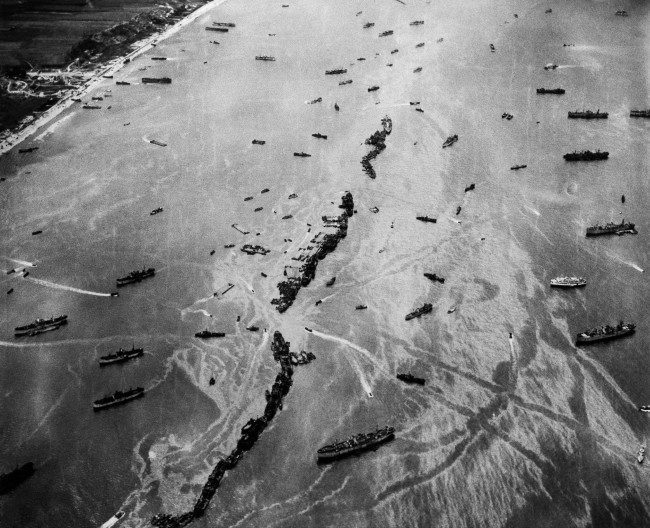
Thirteen liberty ships, deliberately scuttled to form a breakwater for invasion vessels landing on the Normandy beachhead lie in line off the beach, shielding the ships in shore. The artificial harbor engineering installation which was prefabricated and towed across the Channel. 1944 photo. (AP Photo)

The ÂBazooka BoysÂ, a squad of tank maintenance men practicing on a firing range in England, May 9, 1944, marches through a collection of General Sherman tanks, as the tank crewmen watch, while final invasion preparation are made for D-Day. The range, maintained by the British Royal Armored Corps, has at the British Eighth Army. (AP Photo)
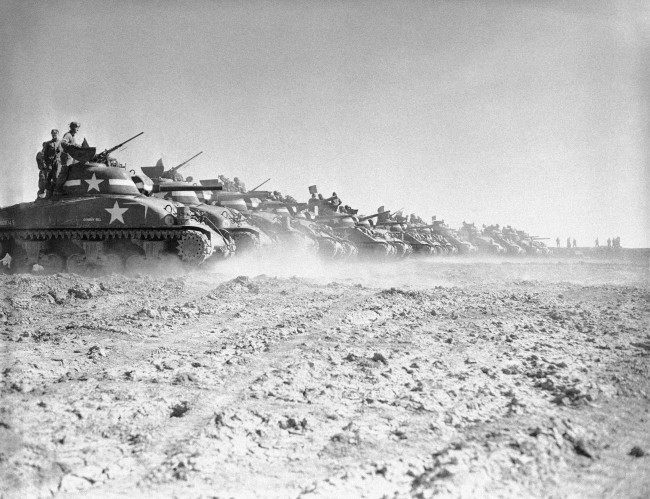
Men of a U.S. tank division line up their General Sherman (M-4) tanks on a range in England to get in a round of firing practice with their 75 mm. guns, as preparations for D-Day reach their climax, May 9, 1944. (AP Photo)
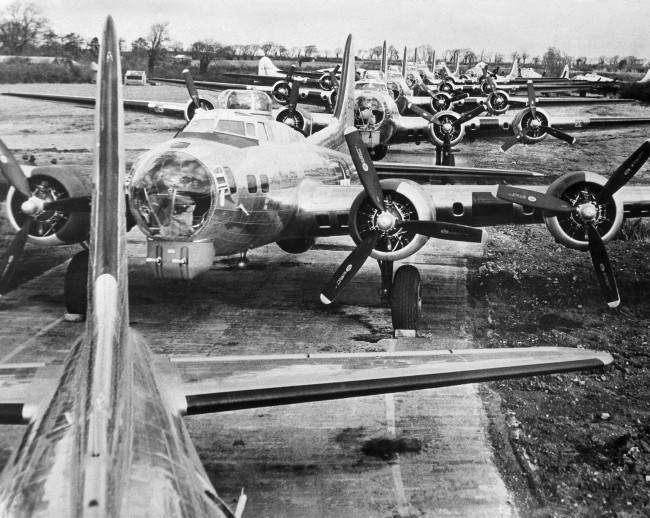
Long row of shiny new Flying Fortresses, part of huge reserves being built up in the United Kingdom for D-Day, stands by to be flown to combat units as replacements, May 25, 1944. (AP Photo)
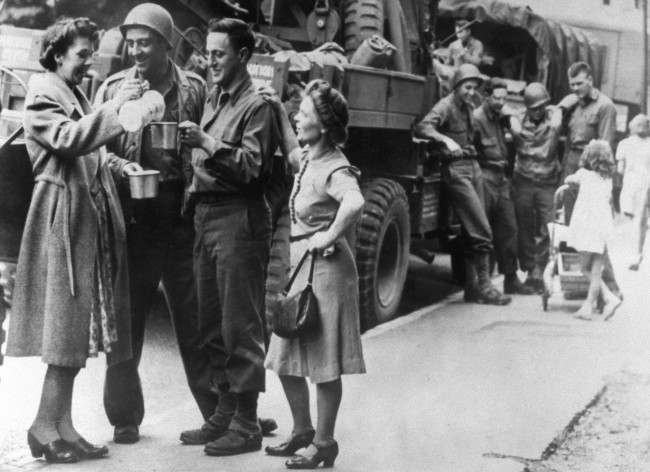
British women pour a mess tin of tea for men from an American convoy heading for the south coast of England during the build-up to the Normandy Landings (D-Day) of June 1944.
A small girl chats to other soldiers in the background. Picture part of PA Second World War collection.
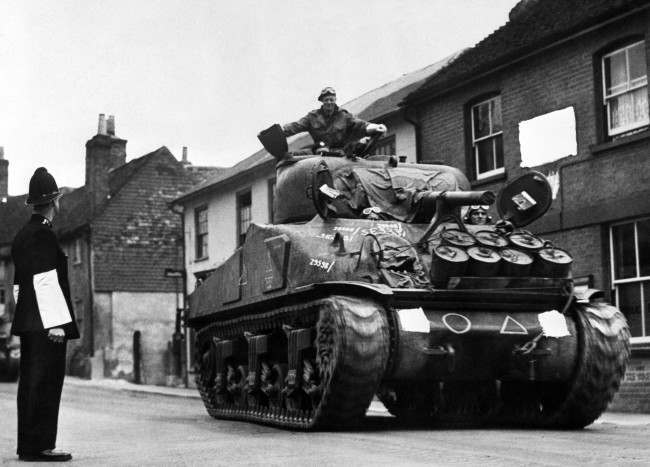
A British Army Sherman Tank rumbles down a street on its way to a south coast port prior to the Normandy landings of 6th June 1944 (D-Day).
The wartime Censor has obliterated a sign in the background as well as the tank’s unit markings.
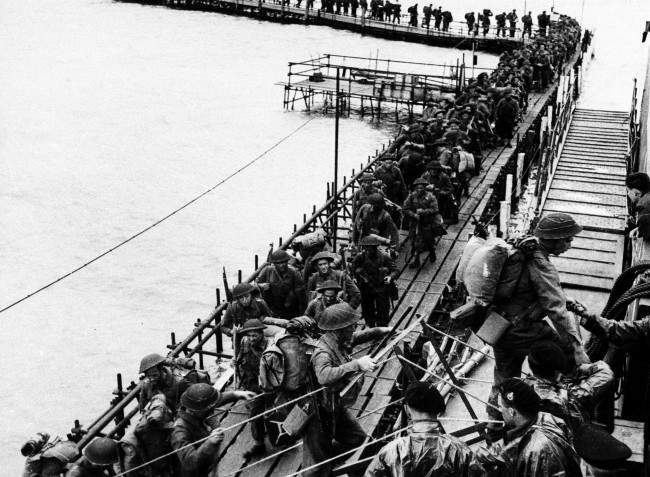
British reinforcement troops from the Royal Pioneers Corps and Royal Engineers embark LCI at an English port, underway to join the Allied invasion in Normandy, France, in June 1944. (AP Photo)
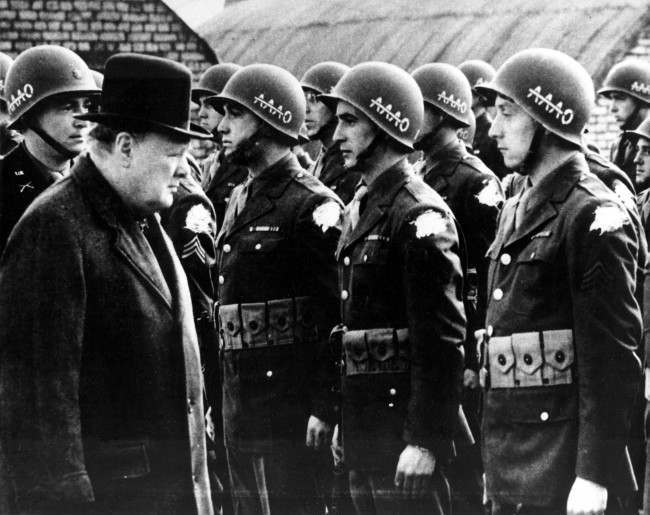
British Prime Minister Winston Churchill, left, reviews American troops at a base in England on the eve of D-Day, June 1944, during World War II. The initials AAAO on the steel helmets with a line across the As stands for “Anywhere, Anytime, Anyhow, Bar Nothing.” The identification shoulder patches of the G.I.s are blotted out by the censor. (AP Photo)
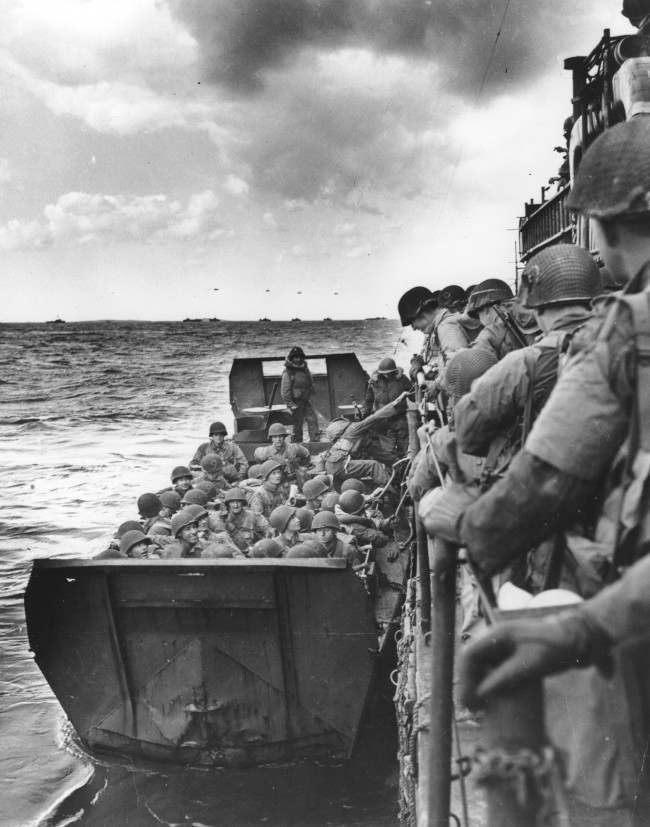
American assault forces hurdle over the side of a Coast Guard LCI into a landing barge, which will bring them into the fight to liberate France, during the Allied invasion of the Normandy, in June 1944. (AP Photo)
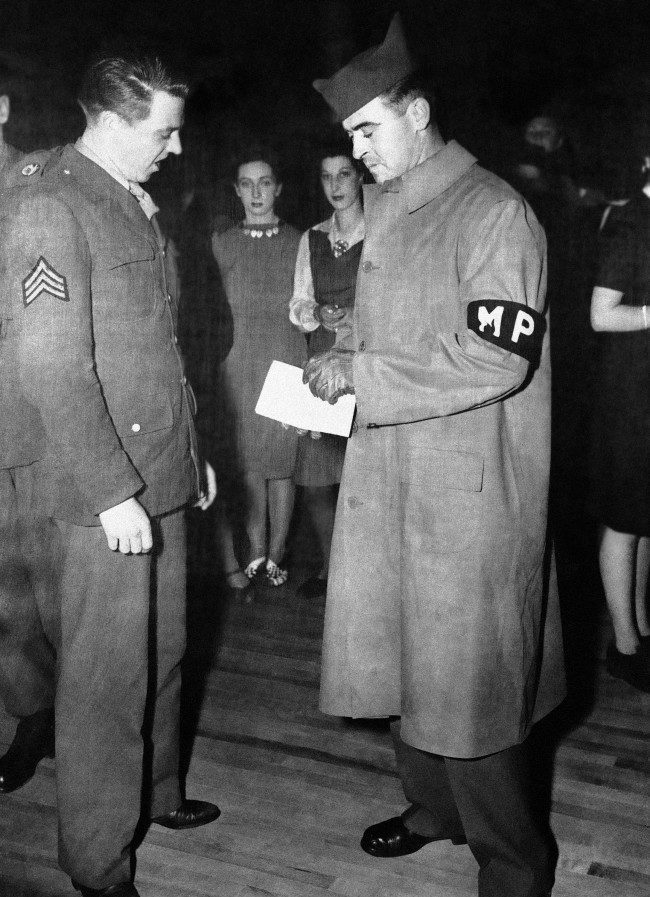
ritish and American civil and military policemen and women, in a sudden widespread check, combed the West End district of London, in a surprise survey calling for identity cards and leave permits on June 2, 1944. As D-Day and H-Hour loom, authorities are on constant alert against any relaxation of home front vigilance. In a dance hall, a U.S. Military policeman checks the leave pass of a U.S. Army sergeant. (AP Photo)
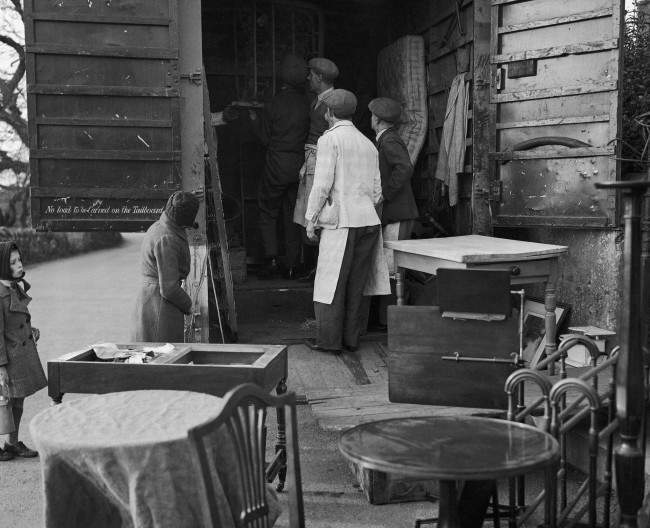
When the Americans landed in their Âpeaceful invasion of England to gird themselves for the real invasion of Festung Europa, a considerable expanse of the English coast was set a side as their training ground for D-Day. And what was once a bit of England is now a ÂYankee military camp, transplanted from the United States. Under orders from their own government, the inhabitants of the village have evacuated their homes to make way for the Americans. These Official U.S. Navy photographs portray the Vignettes of the mass moving-day. Putting on the typically English Âgood showÂ, the villagers disguise their heavy hearts with cheery smiles as they greet the ÂYanksÂ, move out their treasured household goods. Any good-bye all around and bravely drives away. It is ÂExodus in EnglandÂ, Sunday, June 4, 1944. Larges and penates-or, as these temporary Âexiles might put it everything but the house and hearth go into the moving van as they move out and the U.S. Army and Navy moves in. The British government pays the coast of moving, provides billets for those who have no Âkinfolk to move in with, when needed, mobile Food Ministry unit provided two hot meals a day. (AP Photo)
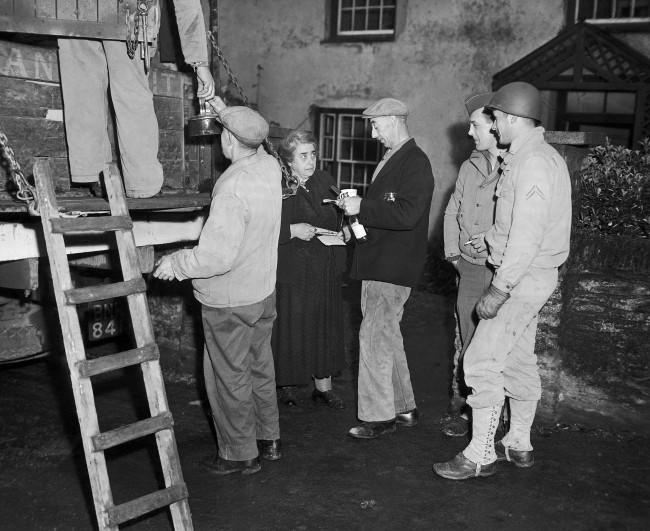
It is ÂExodus in England’ Sunday, June 4, 1944.
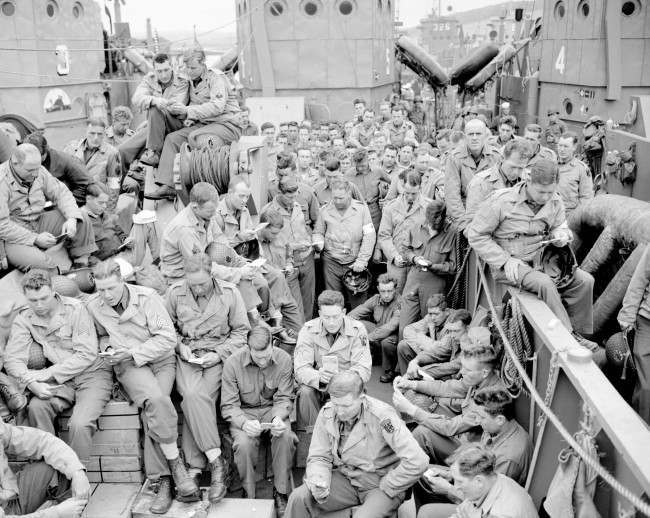
U.S. serviceman attend a Protestant service aboard a landing craft before the D-Day invasion on the coast of France, June 5, 1944. (AP Photo/Pete Carroll)
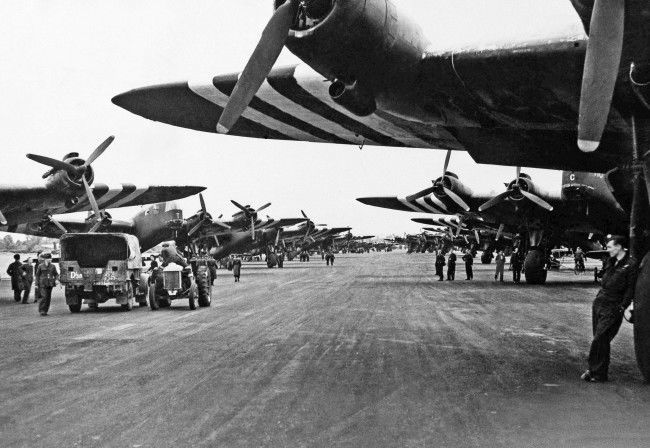
Airborne troops prepare for the descent on Europe of D-Day invasion
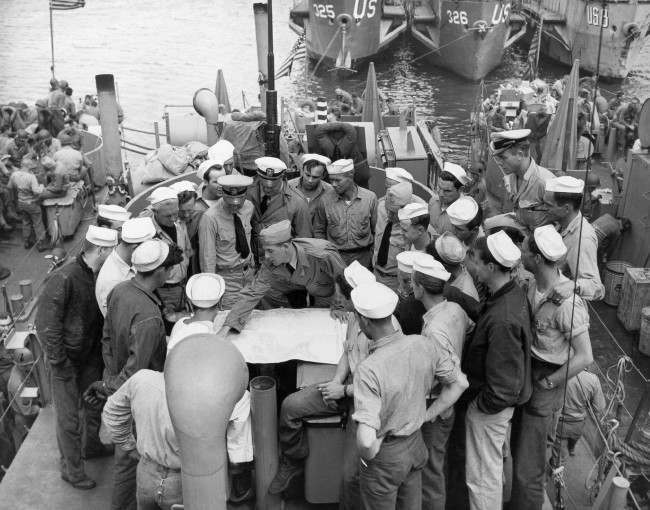
Lt. William V. Patten, centre of group, wearing overseas cap, briefs his crew at a port in England before the invasion of France began June 6, 1944. Patten and his ship are veterans of Tunisia, Salerno, Anzio and Licata. (AP Photo)
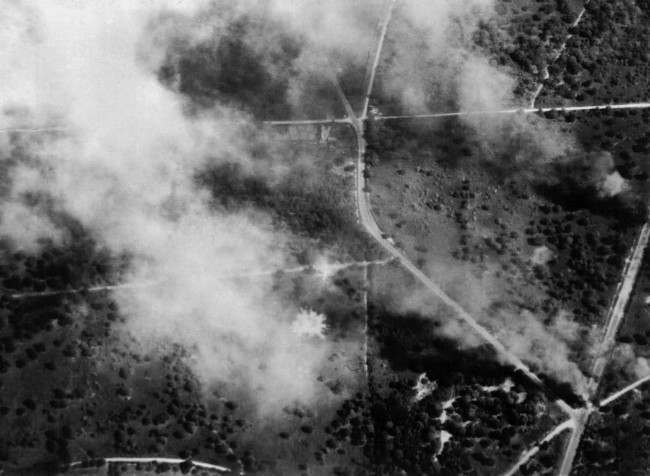
As Von KlugeÂs Army in Normandy tries desperately to escape from the advancing Allied forces and now openly uses the roads by day, every aircraft that 2nd R.A.F. can put into the air is hammering away at the retreating columns. Many of the German transports were jammed bumper to bumper and a great toll was taken by R.A.F. Spitfires, Typhoons and Mustangs. Wrecked enemy vehicles burning of one of the roads after attacks by aircraft of 2nd R.A.F. in Normandy, France in 1944 (AP Photo)
The BBC:
In total 75,215 British and Canadian troops and 57,500 US troops were landed by sea on D-Day. Another 23,400 were landed by air.
By 11 June the Allies had secured the Cotentin Peninsula beyond Cherbourg but progress continued slowly as the Germans put up fierce resistance. The end of the Normandy campaign came with the destruction of the German 7th Army in the Falaise pocket in August.
Although the Allies had reached the German frontier by September they decided to re-group during the winter, because of the failure of Market-Garden and the setback in the battle of the Bulge, and the invasion of Germany only began in January 1945.
Would you like to support Flashbak?
Please consider making a donation to our site. We don't want to rely on ads to bring you the best of visual culture. You can also support us by signing up to our Mailing List. And you can also follow us on Facebook, Instagram and Twitter. For great art and culture delivered to your door, visit our shop.

